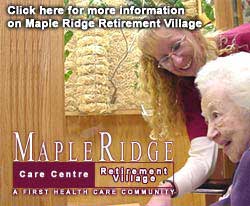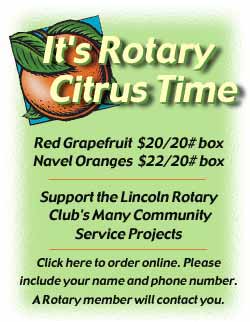|
[click here for Part
1]
A
former health care accountant, Ivy started quilting in 1994 and
became addicted. She was looking for a new career, and she and her
long-time friend Sue Bidwell discussed buying or renting a building
and starting a shop. Sue, formerly an employee of Lehn and Fink,
went back to school when that firm closed and is now working on a
master’s degree in clothing and textiles at Illinois State
University.
With
the help of Wendy Bell and last year’s Business Nexus, they took a
tour of Lincoln. The two couples looked at the building at 125-127
S. Kickapoo, discovered it was for sale and went from there. Sew
Many Friends opened Aug. 25, and the sales are "gently
building," Ivy says.

The
property includes two storefronts, with four apartments above. The
Red Cross office will remain at its present location at 126 S.
Kickapoo, but the area behind the office will be renovated for
classroom space, office use and handicapped-accessible restrooms.
The room behind Sew Many Friends will also be renovated for
additional floor space, and the two couples are busy getting the
apartments ready for renting.
"We
all four bring special talents to the business," Ivy says.
"Sue is knowledgeable about clothing and textiles and has some
marketing background from her course work. She is an expert at
smocking and clothing construction. Butch, who works for Decatur
Electronics, has the necessary skill to organize the remodeling of
the building and the apartments upstairs. Dick is an attorney, and I
know quilting and have the accounting and business background to run
the store."

Needlework
has been a creative outlet for women since early times, Ivy points
out, and before they could read or write, much less vote, women
could express themselves in the quilts they made. It was even a way
to let others know their political opinions, by making quilts like
the Democrat Rose, the Whig Rose, the Union Quilt, or one called
Fifty-four Forty or Fight.
[to
top of second column in this section]
|

Before
the Civil War, women let their opinions about slavery be known
though a quilt called the Underground Railroad. One woman created
her own version of a quilt pattern called the Radical Rose. She put
black in the center of the rose because, for her, that represented
the issue of slavery.
Old
quilt patterns expressed many other things about people’s lives,
including their religious beliefs. Biblical patterns include King
David’s Crown, Job’s Tears, Bethlehem Star, Star and Cross, and
Hosanna, a pattern of palm leaves. Occupations became quilt patterns
like Carpenter’s Wheel, Chips and Whetstones, and Mariner’s
Compass. Everyday sights like Maple Leaf or Rail Fence or Indian
Trail became quilts as well. Even the weather was represented, with
patterns like Snowball and Weathervane.
Old
quilt patterns are still popular, but many women today like to
create their own. "Some people want to make quilts or wall
hangings that others have designed," Ivy says, "but I’ve
always changed whatever I did to create my own patterns. This is an
artistic expression for me, because I’m not a pen-and-ink
artist."

A
bright yellow and russet quilt hanging in the shop is an example of
Ivy’s own design. She made it to commemorate her son’s
achievements in sports at Clinton High School, where he excelled in
track, football, basketball and cross-country. Pictures, reproduced
on fabric by a Decatur firm, are incorporated into what started out
as a traditional pattern, Aunt Fanny’s Favorite, but which Ivy
adjusted to suit her project. She calls her son’s quilt Top
Achievements. Another of her designs, this one a smaller wall
hanging, features two Bible verses, a cross, and a map showing North
and South America.
"Quilting
is no longer just piecing bedspreads," she says. "It has
become a total new form of art."
[Joan
Crabb]
|
|
Customer
Bobby Anne Bergman of Mason City is another fabriholic. "I’m
thrilled that Sew Many Friends is here. They have great-quality
fabrics, and I don’t have to drive so far," she says. Bobby
Anne just retired from the Mason City National Bank and can do what
she wants with her spare time, which is quilt. She’s working on a
sampler quilt of her own design to enter in a Better Homes and
Gardens contest.
"We’ve
had many compliments on our collection of fabrics," Ivy
reports. "Makers we carry that quilters will recognize include
Hoffman, Moda, Marcus brothers, Northcott, RJR, Benartex,
Thimbleberries and Jinny Beyer. We also have 1930s and 1860s
reproduction fabrics."
Quilting
is only one of the hobbies that brings sewing addicts to the store.
Smocking (embroidering patterns on pleated fabric, often on little
girls’ dresses) and heirloom sewing (creating items like
christening dresses or satin pillows that will be used and then kept
as mementos) are among the skills that will be taught in classes
offered by Sew Many Friends.

Quilting
and smocking instruction books, patterns for women’s and girls’
clothing, patterns for the popular hobby of making doll clothing,
embroidery and regular sewing thread, and all kinds of sewing
notions are available, along with the fabric. The shop also sells
some ready-made items taken on consignment, such as children’s
frontier shirts, sunbonnets and aprons, and appliquéd clothing like
shirts and denim jumpers. Ivy will do machine quilting for
customers, and she hopes to carry a line of sewing machines in the
future.
[to
top of second column in this section]
|

The
classes to be offered will vary in length according to the skill
being taught. Small projects may be taught in two or three weeks.
Students who take on a big project, such as making a full-size
quilt, will meet once a month for a year. A class in making
Christmas ornaments will meet just once. Classes can meet either in
the evening or during the day. Ivy suggests dropping in or calling
her at 732-4527 for information about individual classes.
Ivy
will teach the quilting classes, including machine quilting, and Sue
Bidwell will teach smocking. Sallie Marcotte, who went to the Martha
Pullen school, will teach heirloom sewing. Pullen is a nationally
known teacher of that craft.
Beginning
quilting classes usually do not start with a whole quilt but with a
single pieced block that can be used as a wall hanging or other
decoration, Ivy explains. A project will be big enough to teach
techniques but small enough to allow the student to finish the
project and enjoy it in a short period of time. Picking fabrics for
a small project also gives students practice in creating their own
designs.

Another
project might be a sample quilt, using the same quilt block pattern
and the same construction, but putting different fabrics in
differences places within each block so each one is completely
different visually.
(To
be continued)
[Joan
Crabb]
[click
here for Part 2]
|
|

Second
in the series, the ornament is 24-karat gold over brass and will be
enclosed in a green velvet presentation case with the city seal
embossed in gold on the cover. The limited edition ornaments will
have a numbered certificate of authenticity, including information
on the history of the building and a miniature version of the
proclamation naming it the official City of Lincoln ornament. The
cost is $15.
Ornaments
may be reserved now through Nov. 15 at a 10 percent discount when
paid in advance. To reserve ornaments, stop by the Main Street
Lincoln office on the second floor of Union Planters Bank, at 303
South Kickapoo in Lincoln.
[to
top of second column in this article]
|

Purchasers
of last year's ornaments will receive a preregistration form in the
mail and will have the first option on continuing their numbered
series.
Ornaments
will be available for pickup around Thanksgiving and also for retail
purchase at selected locations downtown.
If
you missed the first in the series from 1999, the Logan County
Courthouse, a limited number are available for $20 each. For further
information, call Main Street Lincoln at (217) 732-2929.
[Main
Street Lincoln news release]
|